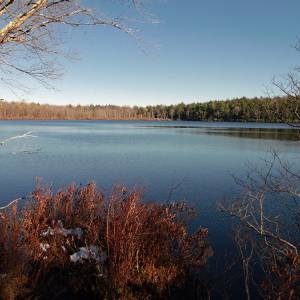Seasonal variation in the relative strength of bottom-up vs top-down effects in pelagic cladoceran populations identified through contribution analysis of birth rate

All claims expressed in this article are solely those of the authors and do not necessarily represent those of their affiliated organizations, or those of the publisher, the editors and the reviewers. Any product that may be evaluated in this article or claim that may be made by its manufacturer is not guaranteed or endorsed by the publisher.
Accepted: 5 August 2023
Authors
Pelagic freshwater communities are characterized by the presence of strong trophic interactions, with the dominance of either food limitation (bottom-up effect) or predation pressure (top-down effect) alternating in time. Though this temporal variation should have a major impact on zooplankton dynamics, few studies have examined it. We consider here an approach that involves identifying signatures of food availability and size-selective fish predation based on the demographic characteristics of cladoceran populations. The relative strength of top-down vs bottom-up effects was assessed on short sampling intervals as contributions of the proportion of adults and fecundity, respectively, to the resulting change in birth rate. The dominant effect on each sampling interval was determined based on the absolute value of the ratio of those contributions (R). From previous experiments, we expected that under the dominant effect of food, R should be less than unity, while under fish predation it should be 1 < R < 3.4. We analyzed two datasets – one collected for a pelagic cladoceran community of three species, and another retrieved from the published data for Daphnia catawba in 1986. In the former case, the temporal variation in the dominant effect was assumed from the pattern of cladoceran populationdynamics as well as limited data on zooplankton consumption by planktivorous fish; in the latter case, the seasonal change in predation pressure by fish on the daphnids was known from the original data. Our results show that the probability density functions for R values from the two datasets indicate an increased probability of the ratio values associated with the abovementioned ranges, suggesting that both bottom-up and top-down effects should have been driving cladoceran population dynamics during the study periods. Based on the results of the Generalized Additive Models (GAMs), the fitted R values for the most abundant species from the first dataset - Bosmina longirostris - changed from the values indicative of strong food effect at the beginning of the study period to those indicative of strong top-down effect when fish with substantial numbers of bosminids in the gut were caught. In the second dataset, for the two time intervals associated with increased predation pressure by fish, the fitted R values were predominantly located between 1 and 3.4, as expected. For both datasets, our results indicate that contribution analysis of birth rate can be used as an informative, albeit preliminary, tool to identify trophic interactions driving zooplankton seasonal population fluctuations in freshwater communities.
Ethics Approval
Federico Marrone, Dept. of Biological, Chemical, and Pharmaceutical Sciences and Technologies, University of Palermo, ItalySupporting Agencies
Russian Foundation for Basic Research , Interdisciplinary Scientific and Educational School “The Future of the Planet and Global Environmental Changes”, Lomonosov Moscow State UniversityHow to Cite

This work is licensed under a Creative Commons Attribution-NonCommercial 4.0 International License.






